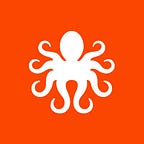A Unified Workflow for DreamWorks Animation
Simplifying artists’ workflow — and how effectively they transfer knowledge from one entity to another — promises gains for the entire industry of animated film production | by Guus Baggermans
The animated film industry has seen many seismic shifts over the last 100 years. From shadow play to the Zoetrope, printing on celluloid film to digital, hand-drawn to CGI — animated film production is ever-changing and evolving.
Yet, for all the amazing cinematic achievements these changes have enabled, they’ve also brought significant complexity to the production pipeline. The technical processes behind the scenes are far more individualized than one would imagine. In an industry in which creativity is front and center, that inventiveness extends to the ways in which its artists work.
To produce a typical animated film, DreamWorks creates and manages 500 million digital files — files that live on complex data structures across many different file types. For the past year, we’ve been hard at work streamlining this workflow management, in close collaboration with DreamWorks engineers, technical directors, CorPS, and PipeX teams; you can read more about the Lighthouse, Allegory, and Harbor software tools here. Today I want to share more about the strategic design thinking we put behind such a multi-layered problem.
The broad challenge: take 400 artists, years-long production times, and the resulting 500 million files and create a landmark solution for the film industry at large, designing artist-friendly UX and UI that allows teams to efficiently access and manage production assets across platforms and geographies.
Once we drilled down into the everyday workload, we learned that the animated film industry has unique characteristics in the way it works, singularities that compelled us to approach the software design differently.
Each film creates its own ontology, with different sequences and shots, environments, backgrounds, and of course voice actors. When a new movie gets underway, the Technical Director takes their integrated learnings from previous work and applies those to the current project — cross-pollination can prove challenging in active projects. We designed several UIs that keep track of all those pieces, efficiently and without error.
Additionally, these teams are highly technical and frequently write their own software to fit individual working styles. They customize their tools precisely to their liking. As we interviewed DreamWorks employees about their processes, we noticed that they quickly moved to a whiteboard to describe workflows. Once we saw these drawings, we knew that helping them visualize mental models would be key.
We created a standardized visual language — called Allegory — for their schemas and workflows, allowing them to remove individualized knowledge and have a unified view. It shows the dependencies and relationships between assets and their associated workflows, items typically only visible in many disparate code files. We translated their whiteboard into diagrams of workflows between tasks and assets, enabling the smooth operation of their production pipeline across global regions and hybrid cloud platforms.
It’s a challenge to make a UI for people who work in code and create their own tools — and even harder to make something they will actually use. We focused on providing DreamWorks Technical Directors with functionality that is hard to replicate in a terminal, functionality that allows them to get a bird’s-eye view of things and gives them power to make decisions quicker and with higher confidence.
There’s a concept in software development of ‘situated software’, in which a piece of software is highly specific to a particular context and user group. It’s much less about user testing after the fact and instead designing in real time, alongside your users. The world of DreamWorks animators was tailor-made for a situated software approach. Simplifying their workflow — and how effectively they transfer knowledge from one entity to another — impacts the massive industry of film production overall.
Guus is a design lead at argodesign, directing the design of public transport and tourism programs, and also responsible for experimenting with the latest technologies in design simulations. For the past 2 years, he’s been the design lead for argo’s work with DreamWorks, helping create a unique collaboration while working through the pandemic and overseeing the creation of multiple different apps and a DLS for the remote development team. He was previously a co-founder of Raft, a strategy and design consultancy in Amsterdam, and an interaction designer at frog, helping companies in sectors such as telecommunication, automotive, and handset manufacturers.
